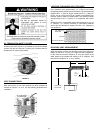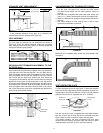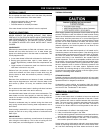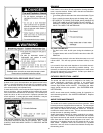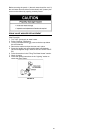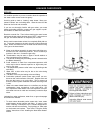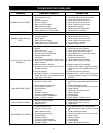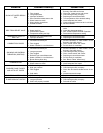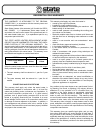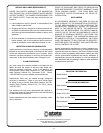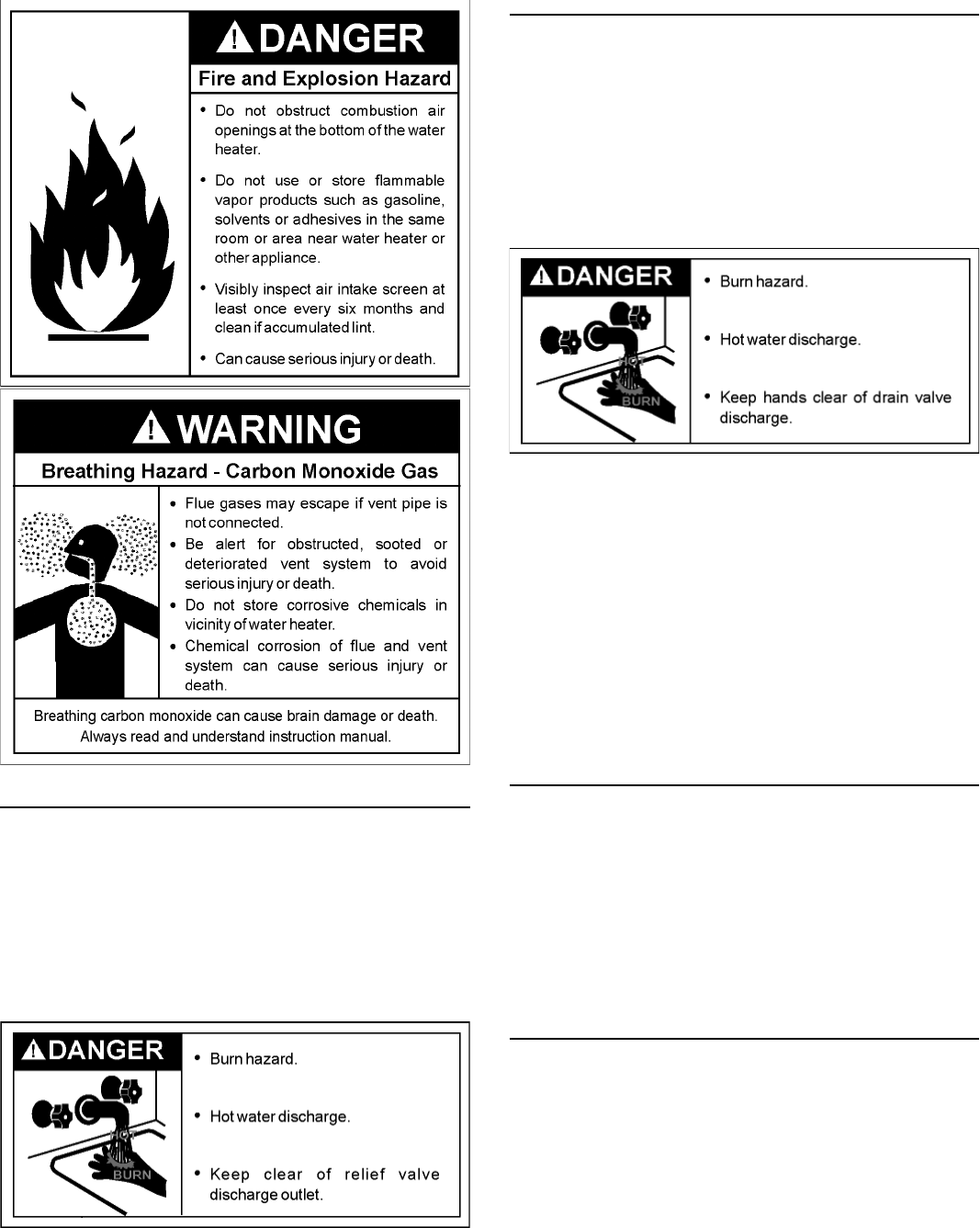
24
TEMPERATURE & PRESSURE RELIEF VALVE
At least once a year, the temperature and pressure relief valve,
Figure 1, must be checked to ensure that it is in operating condi-
tion. Lift the lever at the top of the valve several times until the
valve seats properly and operates freely.
If water does not fl ow, remove the valve and inspect for obstruc-
tions or corrosion. Have a qualifi ed servicer replace with a new
valve of the recommended size as necessary. Do not attempt to
repair the valve, as this could result in improper operation and
a tank explosion. In areas with poor water conditions, it may be
necessary to inspect the T&P valve more frequently.
THE WATER PASSING OUT OF THE VALVE DURING THIS
CHECKING OPERATION MAY BE EXTREMELY HOT. AVOID
CONTACT AND DISCHARGE SAFELY TO PREVENT WATER
DAMAGE.
DRAINING
If the heater is to be shut off and exposed to freezing tempera-
tures, it must be drained. Water, if left in the tank and allowed to
freeze, will damage the heater.
• Turn off the gas and cold water inlet valve to the heater, Figure
1.
• Open a nearby hot water faucet and the heater drain valve.
• BE CAREFUL TO GRASP THE DRAIN VALVE HANDLE SO
THAT THE HAND IS NOT EXPOSED TO HOT WATER. IF
DESIRED, A HOSE MAY BE CONNECTED TO THE DRAIN
VALVE TO CARRY THE WATER AWAY.
The water CAN BE HOT.
• The drain valve must be left open during the shutdown pe-
riod.
• To restart heater, refer to the FILLING instructions under OP-
ERATION.
Periodically open the drain valve and allow the water to run until
it fl ows clean. This will help prevent sediment build-up in the
tank.
It is normal for lime and scale deposits to form within the tank.
Such deposits will not be removed by periodic draining. It is
necessary to chemically delime the affected parts in water areas
where such deposits are encountered. Contact your dealer or
plumber for deliming information.
CATHODIC PROTECTION - ANODE
The anode rod within the tank is designed to be slowly con-
sumed cathodically, minimizing corrosion in the glass-lined
tank. A hydrogen sulfi de (rotten egg) odor may result if water
contains high sulfate and/or minerals. Chlorinating the water
supply should minimize the problem. (See EXTENDED NON-
USE PERIODS).
NOTE: Anode must remain installed (except for inspection) to
avoid shortening tank life. See LIMITED WARRANTY. Replace
as necessary.
ANODE ROD MAINTENANCE
The anode rod is used to protect the tank from corrosion. Most
hot water tanks are equipped with an anode rod. The submerged
rod sacrifi ces itself to protect the tank. Instead of corroding the
tank, water ions attack and eat away the anode rod. This does
not affect the water’s taste or color. The rod must be maintained
to keep the tank in operating condition.
Anode deterioration depends on water conductivity, not neces-
sarily water condition. A corroded or pitted anode rod indicates
high water conductivity and should be checked and/or replaced
more often than an anode rod that appears to be intact. Re-
placement of a depleted anode rod can extend the life of your
water heater. Inspection should be conducted by a qualifi ed
technician, and at a minimum should be checked annually after
the warranty period.



